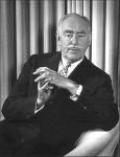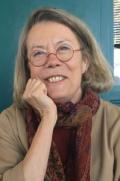Rarely has the full story been told about how a famed botanist, a pioneering female journalist, and First Lady Helen Taft battled reluctant bureaucrats to bring Japanese cherry trees to Washington.
This spring, one of the most delightful signs of rebirth after a deadly pandemic and the dreary months of winter will be the blossoming of hundreds of cherry trees along the Tidal Basin, which typically brings an estimated 1.5 million visitors to the nation’s capital.
In his latest memoir, Carl Bernstein retraces the path of his early journalism career before he went on to make history at the Washington Post.
Editor's Note: Eugene L.
In the largest protest of the Depression, World War I veterans converged on Washington, DC seeking justice. They were met with tanks, bayonets, and tear gas.
Editor’s Note: We asked historian Paul Dickson to give us some perspective on the recent demonstrations in the Nation’s Capital.
Republican Sen. Margaret Chase Smith was the first in Congress to stand up to the bullying of Joe McCarthy.
Alexander Graham Bell traveled to Italy at the turn of the 20th century on an audacious mission to rescue the remains of the man whose legacy endowed the Smithsonian Institution.
Alexander Graham Bell did not spend the Christmas season of 1903 in the festive tradition. On the contrary, the inventor of the telephone passed the holiday engaged in a ghoulish Italian adventure involving a graveyard, old bones, and the opening of a moldy casket.
When he’s not taking care of a majestic marshaling of toy trains, Graham Claytor gets to play with the real thing
The spare and vigorous gentleman on the opposite page, William Graham Claytor, Jr., superintending the departure of a local out of South Sun-Porch Station, D.C., at his brick house in Georgetown, is the only man in Washington, or anywhere else in the country for that matter, wh
For generations, Americans reserved their most fervent “landmark reverence” for those rooms that could boast George Washington— not Abraham Lincoln—slept here.
50 YEARS AGO serious pro basketball was born. Or at least they tried to be serious.
To Horace Albert (“bones”) McKinney, listening over the phone in his parlor on Fourth Street in Winston-Salem, North Carolina, the words of Arthur Morse sounded just fine. Morse, who was part owner of the Chicago Stags franchise in the brand-new Basketball Association of America (B.A.A.), was saying, “My friend, if Yankee Stadium was built for Babe Ruth, then Chicago Stadium was built for Bones McKinney.”
The Babe and Bones in one mouthful. Not bad, even if Morse was laying it on a bit thick. But in this autumn of 1946 McKinney didn’t mind the blarney. Working as he was in the personnel department of Hanes Hosiery and in off-hours playing for the company basketball team, he found the idea of a pro game appealing. But the prospect of flying to Chicago to wrap the deal—that was another story. If the good Lord had wanted him to fly, Bones liked to say, he’d have provided wings. So McKinney left by train, stopping en route in Washington, D.C.
A VETERAN JOURNALIST reflects on how public discourse has been tarnished by the press’s relentless war against Presidents—including his own biggest offense
HOW A NATION BORN OUT OF A TAX REVOLT has—and especially hasn’t—solved the problems of taxing its citizens
The Thirteenth Amendment outlawed slavery in 1865, but right on into this century sailors were routinely drugged, beaten, and kidnapped to man America’s mighty merchant marine
William Davis, a cabinet-maker, left his home near Great Salt Lake in the Utah Territory in the mid-1870s and headed for Northern California, a fast-growing region where he hoped to earn up to six dollars a day by adapting his expertise to ship carpentry.
For a sense of the continuity of the of the terrorist tradition in America, consider this actual sequence of events: The FBI smashes a dead-serious plot to overthrow the federal government and reveals that for more than a year the right-wing militias involved
When Henry Adams sought the medieval world in an automobile, this stuffiest of prophets became the first American to sing of the liberating force later celebrated by Jack Kerouac and the Beach Boys
Test-driving automobiles, Henry Adams discovered in June 1904, was “shattering to one’s nerves.” Trying out a Hotchkiss for purchase “scared my hair green. Truly it is a new world that I live in,” he continued, “though its spots are old.
FOR MORE THAN A DECADE NOW, TENS OF THOUSANDS OF AMERICANS HAVE BEEN LEAVING LETTERS AND SNAPSHOTS, CIGARETTES AND CLOTHING AND BEER FOR THEIR FRIENDS, LOVERS, AND PARENTS WHO NEVER MADE IT BACK FROM VIETNAM
The faces of the "American Dead in Vietnam” was Life magazine’s cover story on June 27, 1969.
America looked good to a high school senior then, and that year looks wonderfully safe to us now, but it was a time of tumult for all that, and there were plenty of shadows along with the sunshine
It was a very good year. Certainly it was if you were seventeen. I was a senior in high school in 1954, a member of the class of January 1955, at Lincoln High School in Jersey City, New Jersey.
An Interview with the President and the First Lady
On a busy Wednesday morning last August, President and Mrs. Clinton found an hour to speak with me in the Oval Office of the White House.
The American newspaper: beleaguered by television, hated both for its timidity and for its arrogance, biased, provincial, overweening—and still indispensable. A Hearst veteran tells how it got to where it is today, and where it may be headed.
By general consensus the first attempt to start a regularly published newspaper in America was Publick Occurrences Both Forreign and Domestick , issued in Boston on September 25, 1690.
The Johnsons and the Kennedys are popularly thought to have shared a strong mutual dislike, but stacks of letters and a remarkable tape of Jacqueline Kennedy reminiscing show something very different —and more interesting
When Jacqueline Kennedy Onassis died four months ago, magazine and newspaper articles published around the world celebrated the facts of her life. And the fables too, as it turns out.
Americans invented the grand hotel in the 183Os and during the next century brought it to a zenith of democratic luxury that makes a visit to the surviving examples the most agreeable of historic pilgrimages
At the turn of the eighteenth century, a story went around Connecticut about a pious old woman who was berating her nephew for being such a rake. And an aging rake, at that. “But we’re not so very different,” he insisted.
The general responsible for remaking the American Army in the aftermath of the Cold War knows a great deal of history, and it sustains him in a very tough job.
It is dawn in Washington as Gen. Gordon R. Sullivan, the Chief of Staff of the United States Army, walks quickly from his helicopter at Andrews Air Force Base to board the jet bound for Fort Leavenworth, Kansas. Waiting for him there is a classroom full of the Army’s most successful and promising officers, colonels, and lieutenant colonels newly chosen to command brigades and battalions. Some of these officers will have fought in Grenada, in Panama, in the Gulf War, or all three. It is possible they will have to lead their soldiers in some other conflict before they leave command. Sullivan wants them to know who leads them.
John Adams and Thomas Jefferson stood together in America’s perilous dawn, but politics soon drove them apart. Then in their last years the two old enemies began a remarkable correspondence that is both testimony to the power of friendship and an eloquent summary of the dialogue that went on within the Revolutionary generation—and that continues within our own.
The U.S. Capitol stands where it always has, but the columns that originally held it up have become a hauntingly beautiful monument somewhere else
One of the most recent and most impressive monuments in Washington, D.C., is in fact nearly two centuries old. Three miles east of the Capitol, the U.S.
The author joins the thousands who feel compelled to trace the flight of Lincoln’s assassin
The first non-children’s book I ever read was Philip Van Doren Stern’s novel The Man Who Killed Lincoln. How it fell into my hands I cannot say.
An hour and a half of growing astonishment in the presence of the President of the United States, as recorded by a witness who now publishes a record of it for the first time
Once the South was beaten, Eastern and Western
troops of the Union army resented each other so violently that some feared for the survival of the
victorious government. Then the tension
disappeared in one happy stroke that gave the
United States its grandest pageant—and General
Sherman the proudest moment of his life.
When the Civil War sputtered out early in May 1865, there were two huge Union armies within a few days’ march of Washington, D.C. One was the Army of the Potomac, winner of the war in the East, commanded by Maj. Gen. George Gordon Meade.
He didn’t want the job but felt he should do it. For the first time, the soldier who tracked down the My Lai story for the office of the inspector general in 1969 tells what it was like to do some of this era’s grimmest detective work.
In the early spring of 1969 I was an Army colonel recently assigned to the office of the inspector general in Washington, and I was not particularly happy about it; I have always disliked living in Washington, and I think that most infantry officers would rat
From Fort Ticonderoga to the Plaza Hotel, from Appomattox Courthouse to Bugsy Siegel’s weird rose garden in Las Vegas, the present-day scene is enriched by knowledge of the American past
The curiously troubled origin of a brief and fitting inscription
On February 9, 1911, Congress approved a bill authorizing construction of a monument to Abraham Lincoln in the nation’s capital. The notion of building such a memorial had long moved many people for varied reasons.
A noted historian’s very personal tour of the city where so much of the American past took shape—with excursions into institutions famous and obscure, the archives that are the nation’s memory, and the haunts of some noble ghosts
The only one of our Presidents who retired to Washington after leaving office was Woodrow Wilson, and for all his celebrated professorial background he certainly did it in style.





